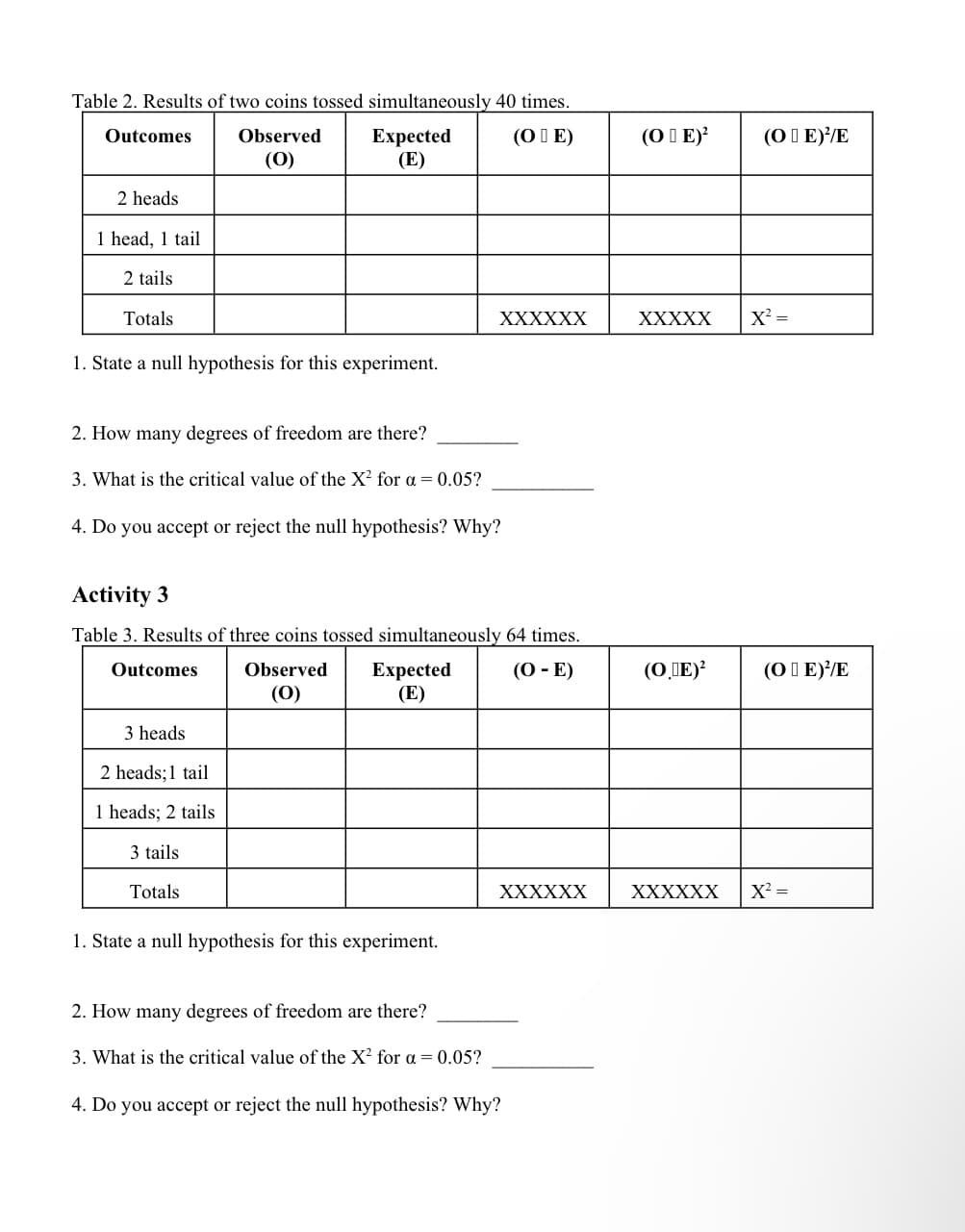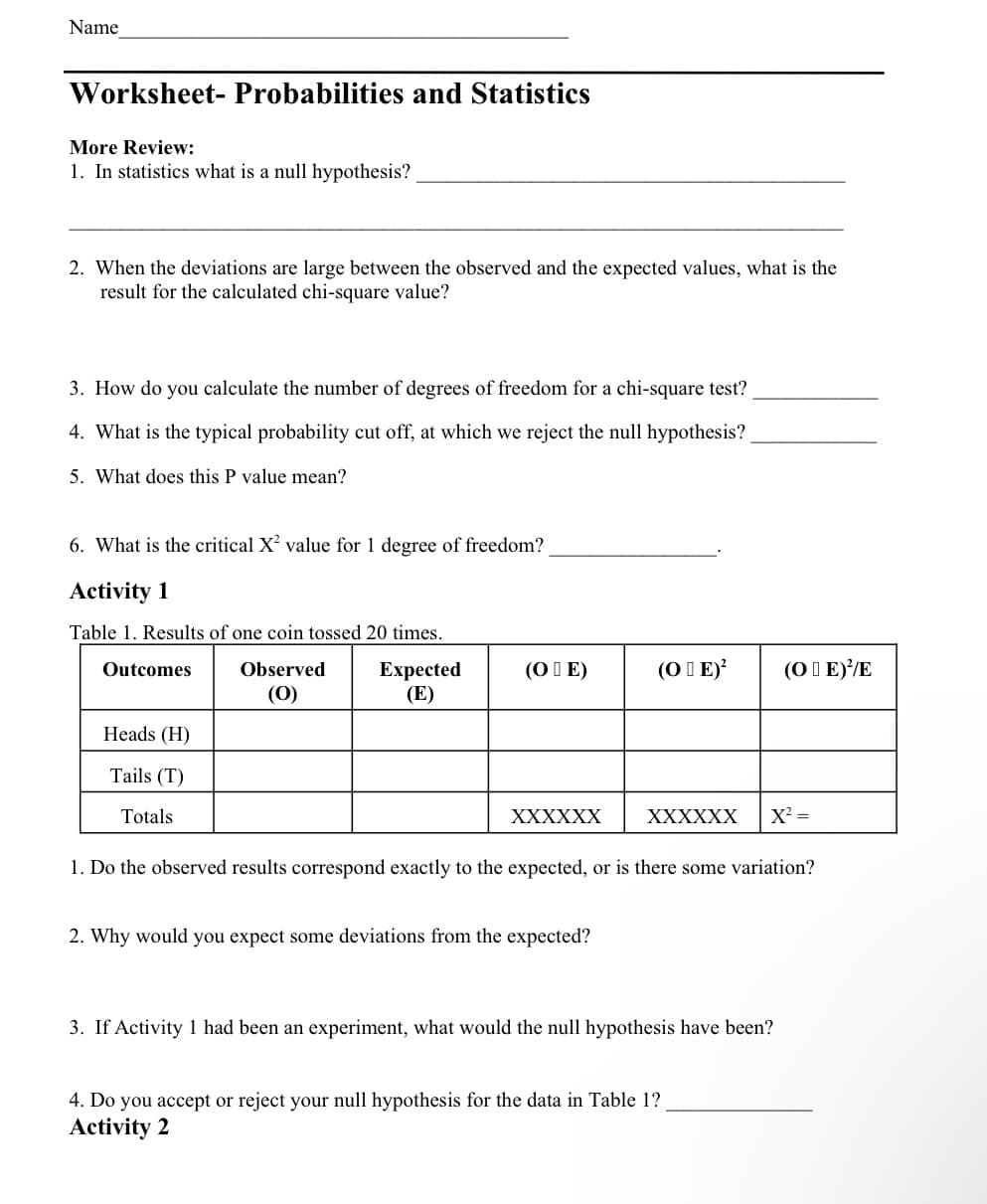A common way to analyze count or frequency (e.g., number of head or tails) data is with a chi- square test. The chi-square test is used in all fields of science to determine if there is a difference between one set of data with obser
A common way to analyze count or frequency (e.g., number of head or tails) data is with a chi-
square test. The chi-square test is used in all fields of science to determine if there is a difference
between one set of data with observations that are grouped into two or more categories (e.g.,
heads or tails) and the expected number of observations in each category. The null hypothesis
would be that the number of heads and tails are not different than one another (similar numbers
of heads and tails are observed relative to expected). A large Chi-square value relative to the
Chi-square critical value would result in a small p value (p<0.05) and indicate that there were
more heads than tails indicating little support for the null hypothesis.
The formula for calculating a chi-square test is below.
Watch the following video for help: https://youtu.be/PnfpWBduB-A
Activity 1 You will need one coin for this activity.
1. Toss a single coin 20 times, recording the number of times the coin lands on "heads" and
"tails" in the Observed Number (O) column of Table 1 on the Worksheet page.
2. Calculate and record the Expected Number (E) in Table 1. The expected number is always
equal to the probability of the event (P) multiplied by the total number of trials.
3. Calculate and record in Table 1 the deviations from the expected; i.e., O E.
Below are two more activities and their respective tables are on the Worksheet page. After
completing the activities, fill in the tables and answer the associated questions.
Activity 2 You will need two coins for this activity.
1. Toss two coins together 40 times, recording the observed combinations in Table 2.
2. Calculate and record the expected number of each combination in Table 2.
3. Calculate and record the deviations from the expected in Table 2.
Activity 3 You will need three coins for this activity.
1. Toss three coins together 64 times and record the observed combinations in Table 3.
2. Calculate and record the expected number of each combination in Table 3.
3. Calculate and record the deviations from the expected in Table 3.


Step by step
Solved in 3 steps


